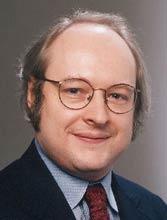|
|
|
Home > Jakob Nielsen
Nielsen eats, drinks and sleeps the subject of Web usability, and charges $10,000 a day for his services. Born in 1957, he has devoted his professional life to human-computer interaction (HCI) and Web usability - he holds 51 U.S. patents, mainly on ways of making the Internet easier to use. His early professional experience includes the Bell Communications Research Lab, the Technical University of Denmark (from which he holds a Ph.D. in user interface design), and the IBM User Interface Institute at the T.J. Watson Research Center.
 |
"There are 20m sites on the web, and nearly all of them are awful." Dr. Jakob Nielsen, Ph.D., doesn't beat around the bush on his favourite subject - making computers and the Internet a more pleasant experience for the average human user. When The New York Times wants to know how software, computers and websites should work, it asks Jakob Nielsen. A combination of scientific research and an obsession with ease of use leaves him widely regarded as the world's leading expert on Web usability. At Sun Microsystems he became usability chief for several design and redesign rounds of Sun's website and intranet (SunWeb), including the original SunWeb design in 1994. He is now Distinguished Engineer for Strategic Technology at SunSoft (the software planet of Sun Microsystems), where his main project is defining the next generation of strongly object-oriented user interfaces. He is also designing the user interface for Sun's next generation of online documentation and working on enhancing the maturity level of current usability engineering methodology. For the past 20 years, he has been a principal of the Nielsen Norman Group in Fremont, California, which he cofounded with Dr. Donald A. Norman, former VP of Research at Apple Computers. The Nielsen Norman Group have been consulting on design and technology to help organisations design "human-centred" products and services. On their trailblazing efforts he comments, "When the internet got going, we were the only ones in this area. Now there are maybe 20,000 website usability consultants - but that’s still not nearly enough, considering how many sites there are and how terrible they are." In Nielsen’s view, surveys and analysis software are no substitute for testing with actual human users performing clearly defined tasks in a one-on-one situation. After a series of such tests, the Nielsen Norman Group developed 222 general principles of design for e-commerce sites, ranging from keeping logos to a minimum to always putting a search box on the home page. Testing out these principles on web sites, the group found none that conformed to them exactly, but identified Amazon.com, the online retailer, and Google.com, the search engine, as two of the best-designed sites on the web.
|
The main points of the Nielsen-Norman studies
should be adhered to by all web designers before setting out on a new website.
Important points to note:
As regards emerging technologies, Nielsen recognises that they are becoming more and more an important element in any site design - but is realistic about the limitations. Today’s Wap phones are far from ideal, with their clunky, alphanumeric keyboards and cramped screens. As examples of good hardware design, he points out Psion’s handheld computers and some of the new MP3 players. Finding out which hardware designs work is also a matter of extensive testing, and it is becoming more and more important for new technology that it is understandable to and usable by the large majority of the population. The recent slowdown in the economy has seen many highly conceptual and tenuous websites going under. Nielsen believes that five years from now, the survivors will be those sites that make usability the driver of their strategy. Usability shouldn't be underplayed - it is ease of use that has helped Yahoo, Amazon, and Google into their market-leading positions. "If a site has not delivered what the user wants in a few seconds, one click and they’re off to a competitor. Which means lost profits to the website owner," says Nielsen. And you can be sure that whichever websites survived will have followed his lead. |
 |
|
Useful Links Search for Jakob Nielsen on: Please email any comments or feedback you have for this site |